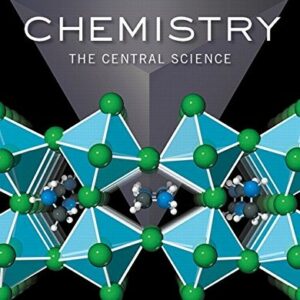Engineering Fundamentals of the Internal Combustion Engine
$293.32
| Title | Range | Discount |
|---|---|---|
| Trade Discount | 5 + | 25% |
- Description
- Additional information
Description
- NEW – Added and expanded topics—i.e., variable valve control; fuel injection; hydrogen fuel; fuel cells; and noise pollution.
-
Presents students with the ever advancing technology changes and improvements of internal combustion engines in the last decade.
-
- NEW – Real data from actual engines.
-
Enhances students’ awareness of the relevance of the concepts to real world applications.
-
- NEW – Over 50 new worked example and review problems—Combine with open-ended design problems in each chapter.
-
Emphasizes important concepts and design throughout the curriculum, and allows students to check their understanding of key content before moving on.
-
- NEW – Added and improved figures throughout.
-
Enhances the visual appeal of the text and students’ understanding of it.
-
- NEW – Added historical notes.
-
Puts the subject material in time context and shows evolution of the processes.
-
- Use of both SI units and English units—With a conversion tables of SI and English units of common parameters used in engine work found in the Appendix.
-
Familiarizes students with the research and development of engines found in the technical literature that uses SI units, and speaks to them in the language of the consumer market which still commonly uses English units—particularly in the automobile industry.
-
- Photographs, line drawings, and cycle diagrams.
-
Shows students many different types and sizes of engines.
-
For a one-semester, undergraduate-level course in Internal Combustion Engines.
This applied thermoscience text explores the basic principles and applications of various types of internal combustion engines, with a major emphasis on reciprocating engines. It covers both spark ignition and compression ignition engines—as well as those operating on four-stroke cycles and on two stroke cycles—ranging in size from small model airplane engines to the larger stationary engines.
1. Introduction.
2. Operating Characteristics.
3. Engine Cycles.
4. Thermochemistry and Fuels.
5. Air and Fuel Induction.
6. Fluid Motion within Combustion Chamber.
7. Combustion.
8. Exhaust Flow.
9. Emissions and Air Pollution.
10. Heat Transfer in Engines.
11. Friction and Lubrication.
Appendix.
References.
Answers to Selected Review Problems.
Index.
- Added and expanded topics—i.e., variable valve control; fuel injection; hydrogen fuel; fuel cells; and noise pollution.
-
Presents students with the ever advancing technology changes and improvements of internal combustion engines in the last decade.
-
- Real data from actual engines.
-
Enhances students’ awareness of the relevance of the concepts to real world applications.
-
- Over 50 new worked example and review problems—Combine with open-ended design problems in each chapter.
-
Emphasizes important concepts and design throughout the curriculum, and allows students to check their understanding of key content before moving on.
-
- Added and improved figures throughout.
-
Enhances the visual appeal of the text and students’ understanding of it.
-
- Added historical notes.
-
Puts the subject material in time context and shows evolution of the processes.
-
This second edition text provides updated and comprehensive coverage of the applied thermodynamic operating principles of the internal combustion engine. The scope of this text includes all IC engines from the largest stationary and ship engines down to the smallest engines used on tools and toys, with an emphasis on reciprocating engines used in automobiles and similar applications. Spark ignition and compression ignition engines are covered, as are engines that operate on four-stroke and two-stroke cycles. The latest automotive technologies are addressed, such as hybrid vehicles, higher voltage electrical systems, electronic valve actuation, and cylinder output. The text covers the fundamentals of fuels, combustion, heat transfer, lubrication, and fluid mechanics as applied in the operation of IC engines. Chapter topics include basic fundamentals, cycles, induction, cylinder flow, combustion, exhaust, and omissions and air pollution.
Features of the Book
- Coverage of the latest automotive technologies, including the Miller cycle, variable compression ratios, 42-volt electrical systems, hybrid vehicles, variable valve actuation, cylinder cutout, alternate fuels, and electronic valve control
- Photographs, line drawings, and cycle diagrams of many different types and sizes of engines
- Many additional worked example problems to emphasize important concepts
- Additional review problems at the end of each chapter, including open-ended design problems
- Numerical answers to selected review problems
- Use of both SI and English units
- Additional historical notes
- Conversion factors for common engine parameters
- Tables of fuel properties, air properties, chemical parameters, and text notation
- Expanded reference listing
Additional information
| Dimensions | 51.18 × 287.40 × 370.08 in |
|---|---|
| Imprint | |
| Format | |
| ISBN-13 | |
| ISBN-10 | |
| Author | |
| Subjects | engineering, Mechanical Engineering, higher education, Engineering and Computer Science, Internal Combustion Engines |


